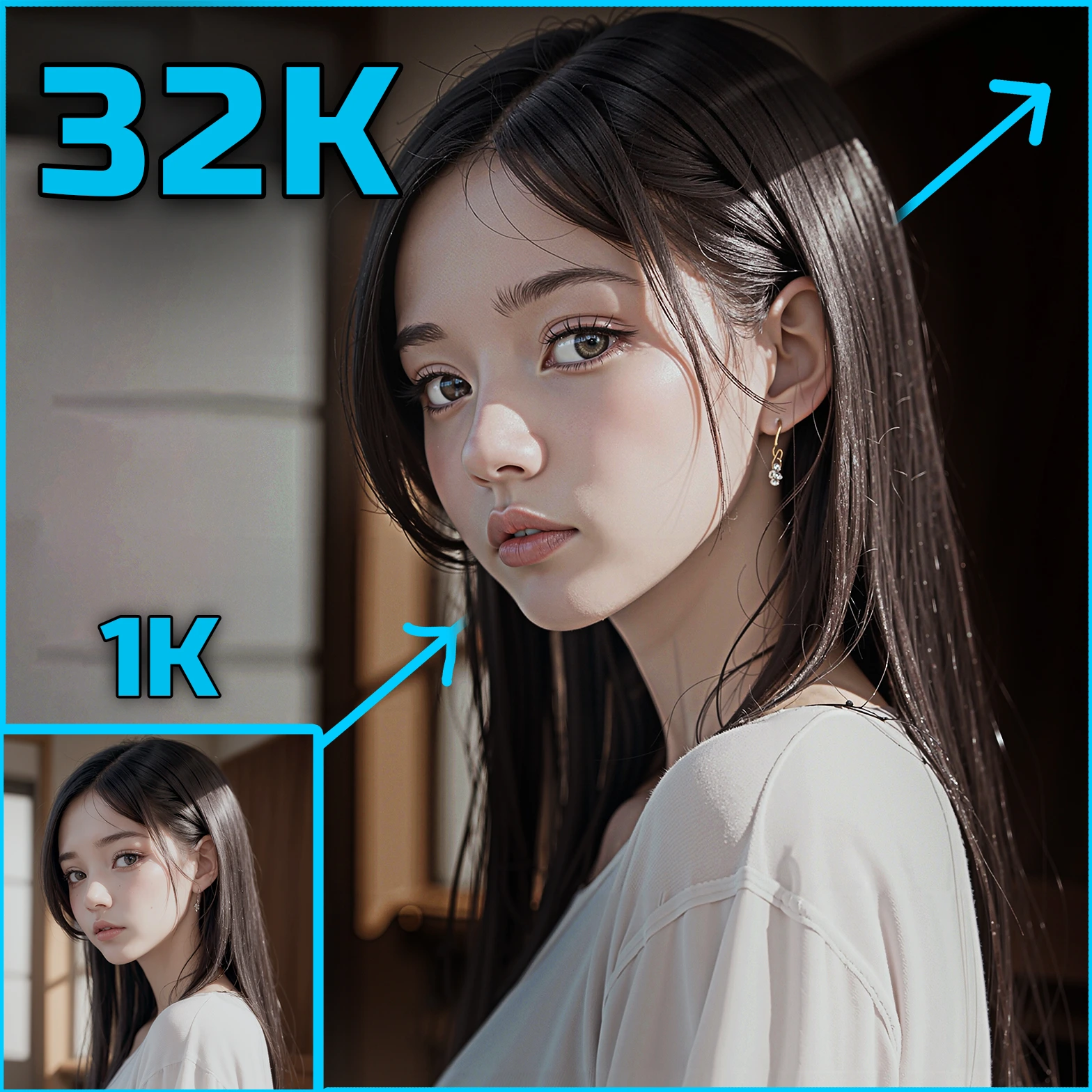ComfyUI Node: SONIC_PreData
SONIC_PreData
CategorySONIC
smthemex (Account age: 639days) Extension
ComfyUI_Sonic Latest Updated
2025-02-25 Github Stars
0.81K
How to Install ComfyUI_Sonic
Install this extension via the ComfyUI Manager by searching for ComfyUI_Sonic- 1. Click the Manager button in the main menu
- 2. Select Custom Nodes Manager button
- 3. Enter ComfyUI_Sonic in the search bar
Visit ComfyUI Online for ready-to-use ComfyUI environment
- Free trial available
- 16GB VRAM to 80GB VRAM GPU machines
- 400+ preloaded models/nodes
- Freedom to upload custom models/nodes
- 200+ ready-to-run workflows
- 100% private workspace with up to 200GB storage
- Dedicated Support
SONIC_PreData Description
Facilitates preprocessing of audio and image data for SONIC framework in ComfyUI, streamlining workflow efficiency.
SONIC_PreData:
The SONIC_PreData node is designed to facilitate the preprocessing of audio and image data for use in the SONIC framework, which is a part of the ComfyUI custom nodes. This node plays a crucial role in preparing the necessary data structures and configurations required for subsequent processing and analysis within the SONIC pipeline. By handling the conversion and organization of input data, SONIC_PreData ensures that the audio and image inputs are appropriately formatted and ready for further processing, thereby streamlining the workflow and enhancing the efficiency of the overall system. This node is particularly beneficial for users who need to integrate audio and visual data seamlessly, as it abstracts the complexities involved in data preparation, allowing you to focus on creative aspects rather than technical details.
SONIC_PreData Input Parameters:
clip_vision
This parameter represents the vision model component of the CLIP (Contrastive Language–Image Pretraining) framework. It is used to process and encode image data, which is essential for aligning visual inputs with audio features. The clip_vision parameter ensures that the image data is compatible with the rest of the SONIC pipeline, facilitating effective data integration and analysis.
vae
The vae parameter refers to the Variational Autoencoder, a model used for encoding and decoding image data. It plays a critical role in compressing and reconstructing images, which is vital for efficient data handling and processing within the SONIC framework. The VAE helps in maintaining the quality of image data while reducing its size, making it easier to manage and analyze.
audio
This parameter represents the audio input data that needs to be processed. The audio parameter is crucial for extracting audio features and aligning them with visual data, enabling a comprehensive analysis of multimedia inputs. It ensures that the audio data is correctly formatted and ready for integration with other data types in the SONIC pipeline.
image
The image parameter refers to the image input data that is to be processed alongside audio data. It is essential for extracting visual features and aligning them with audio inputs, facilitating a holistic analysis of multimedia content. The image parameter ensures that the visual data is correctly formatted and ready for integration with audio data in the SONIC framework.
weight_dtype
This parameter specifies the data type for model weights, which can impact the precision and performance of the processing tasks. The weight_dtype parameter allows you to choose between different data types, such as fp16, fp32, or bfloat16, depending on your specific requirements and hardware capabilities. Selecting the appropriate data type can optimize the performance and efficiency of the SONIC pipeline.
min_resolution
The min_resolution parameter defines the minimum resolution for image data, ensuring that the images meet a certain quality standard before processing. This parameter helps in maintaining the visual quality of images while balancing the computational load. The default value is 512, with a range from 128 to 2048, allowing you to adjust the resolution based on your specific needs.
duration
This parameter specifies the duration of the audio input, which is crucial for aligning audio and visual data over time. The duration parameter ensures that the audio data is correctly synchronized with image data, facilitating a comprehensive analysis of multimedia inputs. The default value is 10.0, with a range from 1.0 to 100000000000.0, providing flexibility in handling various audio lengths.
expand_ratio
The expand_ratio parameter determines the ratio by which the input data is expanded, which can impact the scale and scope of the analysis. This parameter allows you to adjust the size of the input data, providing flexibility in handling different data scales. The default value is 0.5, with a range from 0.1 to 1.0, enabling you to fine-tune the data expansion based on your specific requirements.
SONIC_PreData Output Parameters:
data_dict
The data_dict output parameter is a dictionary that contains the preprocessed audio and image data, along with the necessary configurations for further processing in the SONIC pipeline. This output is crucial for ensuring that the input data is correctly formatted and ready for integration with other components of the SONIC framework. The data_dict provides a structured and organized representation of the input data, facilitating seamless data handling and analysis.
SONIC_PreData Usage Tips:
- Ensure that the
clip_visionandvaemodels are correctly configured and compatible with your input data to optimize the performance of the SONIC pipeline. - Adjust the
min_resolutionanddurationparameters based on the quality and length of your input data to maintain a balance between computational efficiency and data quality. - Experiment with different
weight_dtypesettings to find the optimal balance between precision and performance, especially if you are working with limited hardware resources.
SONIC_PreData Common Errors and Solutions:
Model not found
- Explanation: This error occurs when the specified model files for
clip_visionorvaeare not found in the expected directory. - Solution: Ensure that the model files are correctly installed and the paths are properly configured in your environment.
Invalid data type
- Explanation: This error arises when an unsupported data type is specified for the
weight_dtypeparameter. - Solution: Verify that the
weight_dtypeis set to one of the supported types:fp16,fp32, orbfloat16.
Resolution out of range
- Explanation: This error occurs when the
min_resolutionparameter is set outside the allowed range. - Solution: Adjust the
min_resolutionto a value within the specified range of 128 to 2048.
Duration too short or too long
- Explanation: This error is triggered when the
durationparameter is set to a value that is either too short or exceeds the maximum allowed length. - Solution: Set the
durationto a value within the range of 1.0 to 100000000000.0 to ensure proper synchronization of audio and visual data.
SONIC_PreData Related Nodes
RunComfy is the premier ComfyUI platform, offering ComfyUI online environment and services, along with ComfyUI workflows featuring stunning visuals. RunComfy also provides AI Playground, enabling artists to harness the latest AI tools to create incredible art.




